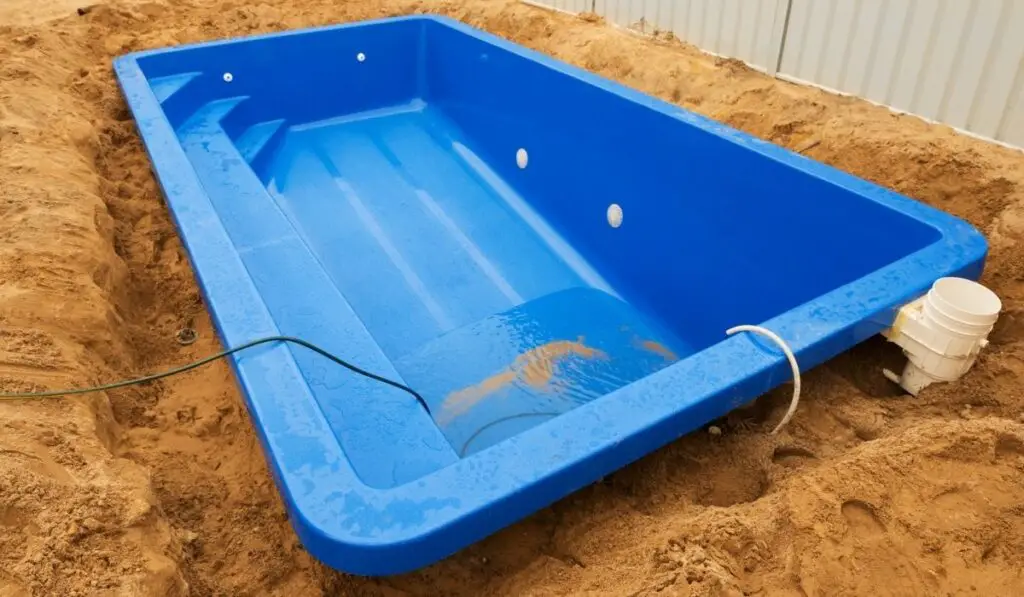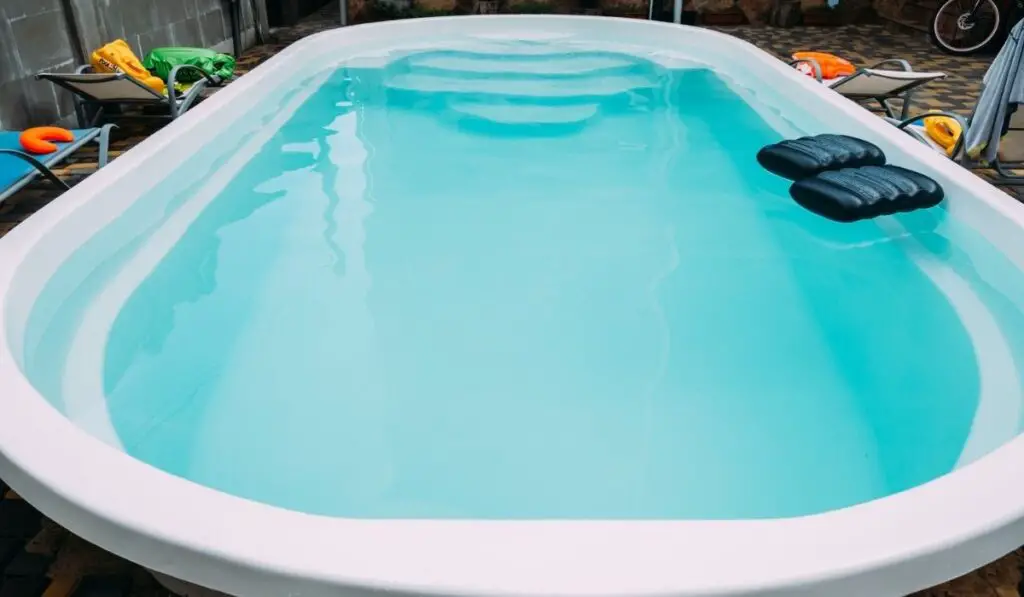Many new homeowners are concerned about whether a fiberglass pool can crack, and rightfully so. A pool material that cracks easily can greatly increase the maintenance costs associated with the pool.
Fiberglass pools can crack, but it’s not a common issue. Fiberglass is a strong, flexible material. It can only crack from manufacturer’s error, poor installation, or natural disasters. Nonetheless, tiny spider cracks can occur due to wear and tear. They have no effect on the pool’s stability.
If your pool cracks, it’s best to consult an expert to help you decide on the best course of action. Spider cracks may need simple resurfacing to restore the appearance of the pool. For wider cracks, a binder such as epoxy resin can be used to fill it in. Read on to find out more about fiberglass pool cracks, how to fix them, and general fiberglass maintenance tips.
Can Fiberglass Pools Crack?

Fiberglass pools are extremely strong and durable — and they look amazing. Fiberglass is cheap to maintain, and the surface is easy to clean. But because fiberglass is thinner than other pool-making materials like stone or concrete, you might be wondering whether it can crack.
Many people believe that concrete can last longer than fiberglass, but that’s not the case. Fiberglass can outlive concrete and can even last as long as steel, though it’s 75% lighter than steel.
However, like all other pool-building materials, fiberglass is subject to wear and tear, leading to the degradation of its surface. In some rare cases, fiberglass can crack. The cracking of fiberglass can result from a poor manufacturing process, poor installation, or damage from an excessive load on the surface. In these cases, a simple fiberglass patch kit (example on Amazon) can be used to prevent leaks.
Fortunately, the cracking of fiberglass occurs mainly on its gel-coated surface and doesn’t affect its structural integrity. If the crack doesn’t go beyond the gel surface, you may only need resurfacing to make the fiberglass surface look as good as new again.
What Causes Fiberglass Pools to Crack?
Some of the main causes of cracks in fiberglass include:
Improper Leveling
Cracks can occur in a fiberglass pool if it’s installed on an uneven surface. Cracks can also occur if the ground under the pool expands or shifts after the pool is installed.
Ground movement or improper installation often results in deep and long horizontal cracks. This problem can only be solved by re-installing the pool.
Poor Quality
Fiberglass of a low quality is bound to have deformities. For example, if the fiberglass is too thin, it can develop cracks, even if it’s installed properly on a leveled surface. Thin fiberglass warps to take the shape of the material it’s laid on and, in the process, can develop cracks.
For example, when the pool is filled with water, it will exert excessive pressure on the thin fiberglass, causing deformities.
The pressure on the fiberglass surface can cause spider cracks, which, if not attended to, can get worse. It can also cause serious wall cracks and severe bulges. If your fiberglass cracks result from a poor manufacturing process, you can contact your manufacturer for a replacement if you have a warranty.
Water Pressure
There’s a maximum load a pool is designed to support. Even though fiberglass is flexible, it can crack when the water pressure exceeds the limits set by the manufacturer. This can occur due to flooding, for example. Cracks can also occur when the soil under the pool shifts due to a prolonged dry spell or earthquake.
Remember that the water inside the pool is supposed to balance the pressure on either side of the pool wall.
For this reason, if you drain water off the pool too fast or you leave the pool empty for too long, the backfill will exert pressure on the outer side of the pool wall, and this may cause the wall to bulge, crack, and split.
Fiberglass Crack Repair
Cracks in fiberglass differ in severity and size. For example, spider cracks are very tiny and don’t pose any structural danger. However, some cracks can be more extensive and can cause structural instability.
Don’ ignore any cack in your fiberglass pool. If you notice cracks forming, call an expert to assess them and then decide how to proceed.
For minor cracks, it will usually suffice to fill them with fiberglass paint, but for severe cracks, you can follow the steps below to fix them:
- First, before fixing the crack, you have to drain water out of the pool.
- Drill a small hole at both ends of the crack to stop it from extending further.
- Use a dry rag to wipe the crack until it’s dry and clean. If it’s wet, the binding material won’t stick well.
- Fill the crack with an adequate amount of fiberglass epoxy resin (on Amazon). Make sure you fill the cup completely.
- Allow the epoxy resin to dry. This may take one day.
- Once the surface is dry, use sandpaper to smooth the surface.
- You can apply a colored gel over the area you’ve repaired so the pool can maintain its uniform color.
- Once you’re satisfied that the crack is filled and the epoxy is dry, you can refill the pool with water.
How to Maintain a Fiberglass Pool

When it comes to pool types, fiberglass is probably the cheapest option — and the easiest to maintain. Though the initial installation cost is on the higher side, it will pay off in the long run. When you maintain it well, the pool can last for up to 30 years. Here are the simple things you need to do:
- Clean the pool regularly: You have to clean the pool regularly to remove any debris that may accumulate in it. You also have to remove any floating leaves or bugs from the water.
- Balance the water chemistry: For your pool to be sanitized and friendly to your skin, you have to balance its chemistry. Make sure the total alkalinity, calcium hardness, free chlorine, pH, and cyanuric acid levels are within the recommended limits.
- Run the pool filter: With a fiberglass pool, you’ll need to run the filter daily. This will ensure the water is clean and clear.
- Maintain an appropriate water level: The water level in your pool shouldn’t be too low or too high. It should always be above the skimmer. After heavy rainfall, you may need to release some water from the pool.
